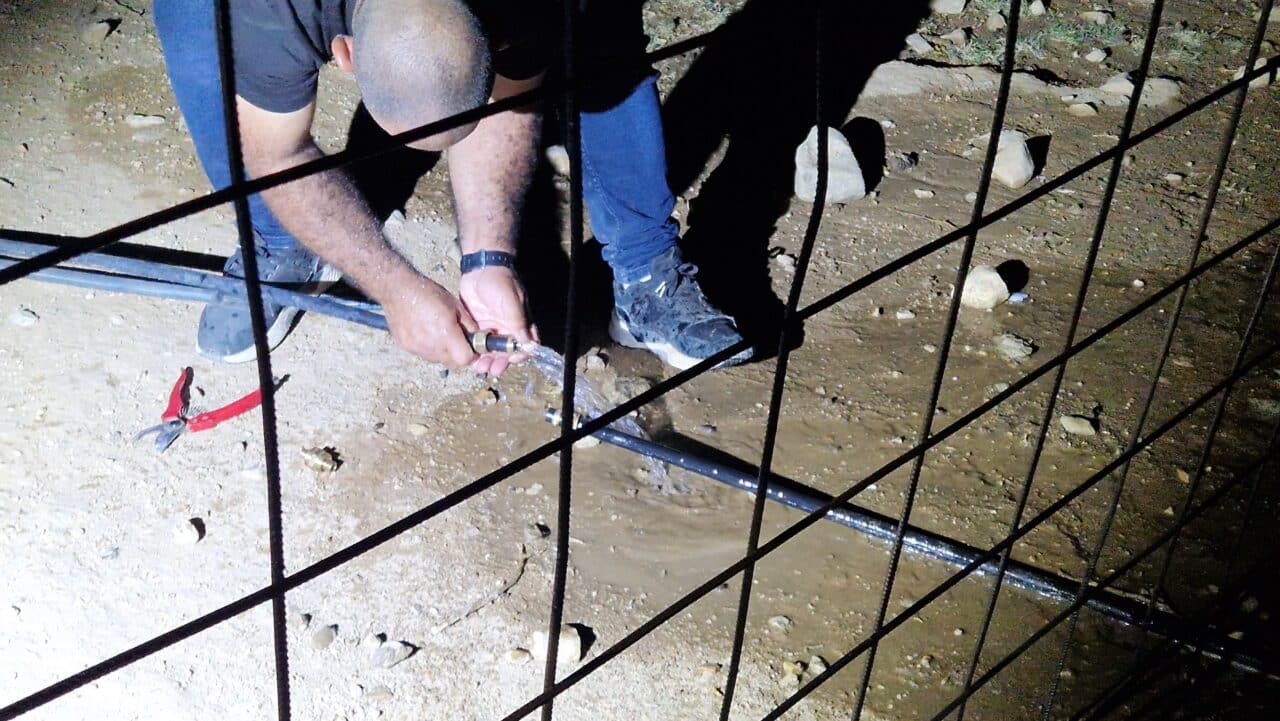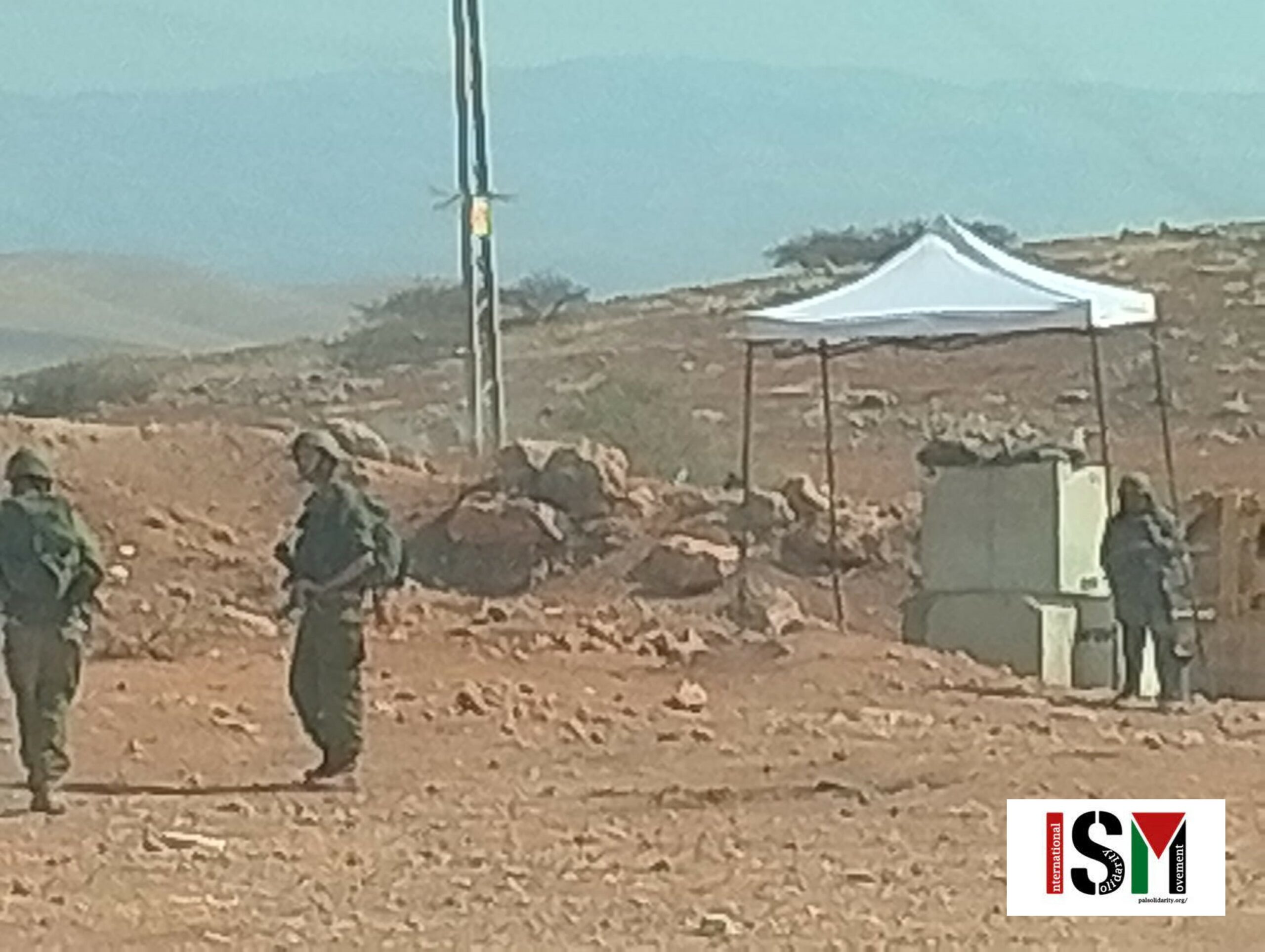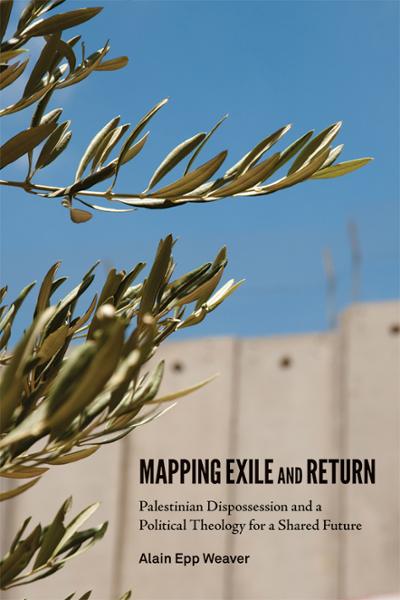Tag: Displacement
-
Fasayil al Wusta: Forced Displacement Continues in the Jordan Valley
Palestinian households in the village of Fasayil al Wusta, located in the Jordan Valley north of Jericho, have been facing increasing harassment and attacks over the past month. As a result, five families decided to leave the area on Thursday, November 6. Only one family remains, still resisting despite displacement efforts. Fasayil al Wusta lies…
-
Colonial repression accelerates in Jordan Valley
17 October, 2023 | International Solidarity Movement | Jordan Valley Tuesday 17 Oct, an update from the Jordan Valley: Since Israel waged war on Gaza, on October 7, the situation in the Jordan Valley has deteriorated dramatically. Military checkpoints are often completely closed, and movements in and out of the Jordan Valley are severely…
-
Palestinian Christian struggle mapped in new book
5th May 2014 | The Electronic Intifada, Joe Catron | Gaza City, Occupied Palestine In Mapping Exile and Return: Palestinian Dispossession and a Political Theology for a Shared Future, American Mennonite theologian and aid worker Alain Epp Weaver explores a legacy of Palestinian Christian exile, and struggle for return. The book’s terrain ranges from the ethnically-cleansed villages of the Galilee to the Upper…



